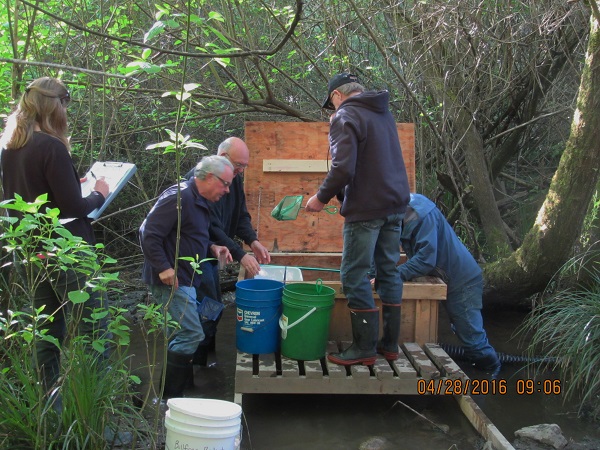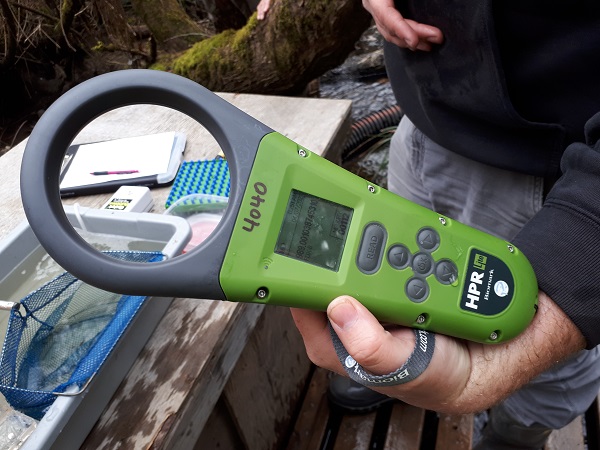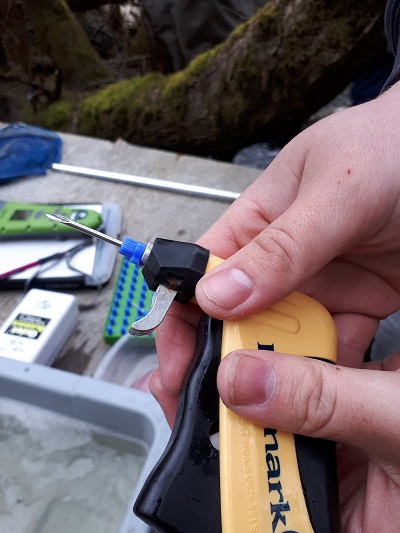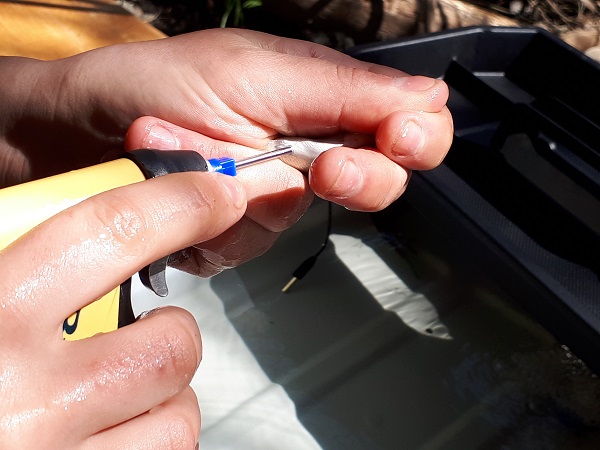Tagging Fish at the Smolt Trap

Hey, what's happening at the smolt trap?
Our annual smolt trap operation on Shelly Creek is just one of many sites on Vancouver Island where PIT tagging is occurring as part of an investigation into “survival bottlenecks” of Coho and Chinook salmon and Steelhead trout populations in the Salish Sea.
A “survival bottleneck” is an event that drastically reduces the size of a population. In this case we are referring to the recent declines in Chinook, Coho, and Steelhead populations in the Salish Sea. The bottlenecks that are drastically reducing the size of these fish populations are believed to occur in their Smolt Trap on Shelly Creek - photo taken before pandemic first year in the ocean. Yet little is known about their first year of marine life and what impacts predation, competition, and climate change have on them.
A Passive Integrated Transponder (PIT) tagging program is one of the tools the Pacific Salmon Foundation (PSF) and BC Conservation Foundation (BCCF) are using to examine the first year of marine life and to follow fish throughout their life cycle. A PIT tag is a very small metal tag implanted into the abdomen of a salmon or steelhead juvenile. Each tag contains a unique code with information about the fish, like the species, age, date and location of where it was tagged. When a tagged fish swims over antenna arrays that have been installed across the bottom of creeks and rivers, the code is picked up and stored by the arrays so the movements of individuals can be tracked. Scanner technology employed at cleaning tables at high-traffic recreational fishing landing sites will pick up the codes of captured tagged fish and provide information on exploitation rates. Routine scanning for expelled tags at heron rookeries and sites where seals and sealions hang out will provide information on predation rates. Tagged fish that survive to spawn will be scanned as they return to the rivers and creeks of origin.

The goal is to tag over 50,000 wild and hatchery juvenile Chinook, Coho, and Steelhead throughout the Salish Sea region each year for the next four years. That’s a lot of fish!. The Englishman River is just one of many rivers where fish will be tagged. And since Shelly Creek is a tributary of the Englishman, and it’s where we operate our smolt trap each spring, the Coho and Steelhead we capture and count in our trap are being tagged by BCCF before they are released. The photo to the right shows a Coho captured at our smolt trap that is about to receive a PIT tag.
Thea Rodgers and Thomas Negrin from BCCF are injecting the teeny tiny tags into the teeny tiny fish that we capture and count (see photos below). Good thing these young people are handling the job because most of us "slightly older" folk would probably inject those tags right into our thumbs. Imagine what that could do to a 5G system.



Implanting PIT tag into fish abdomen Scanner for reading PIT tags
Device for implanting PIT tags (I think I'd prefer a vaccine, thank you very much)
By revealing key survival bottlenecks for Chinook, Coho, and Steelhead, strategies can be developed that may improve survival. To learn more, read this excellent brochure by PSF Bottlenecks Survival Study.